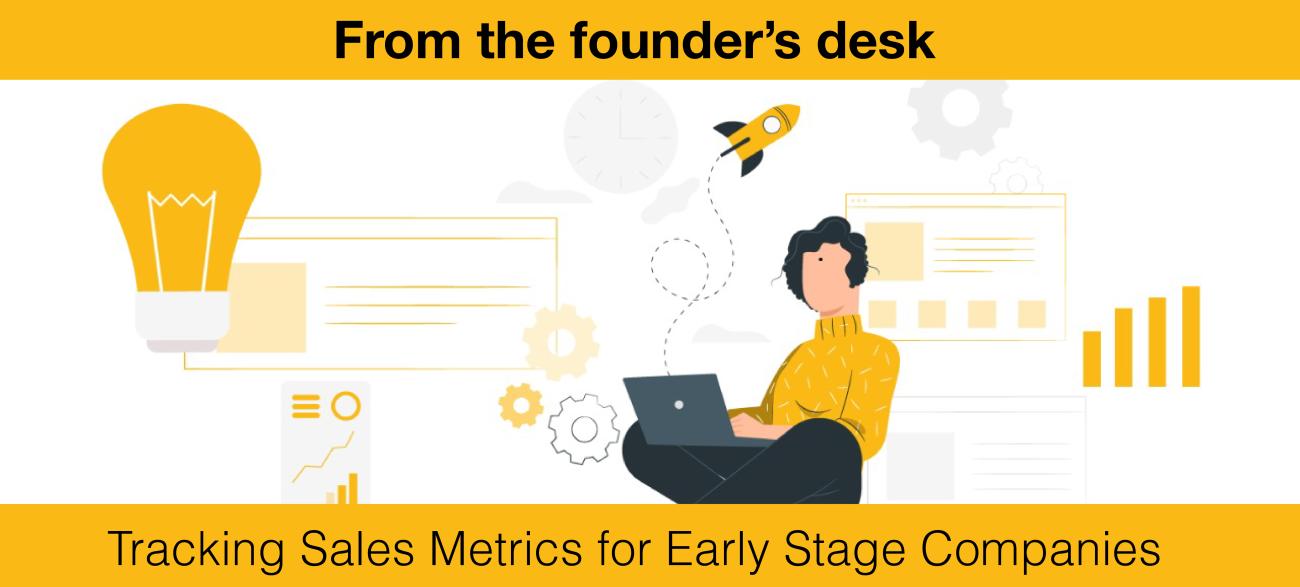There comes a point in every founder’s life when the company is growing so fast that it becomes important to track different kinds of metrics, but is not big enough to be able to afford expensive software like Hubspot or even Zoho advanced and the likes, to do it well.
That’s when we use human ingenuity and good old excel sheets (or its google version). In some ways it’s better because you can customise it completely as per your business needs.
This article is about how we created a data system to track metrics for FlexiBees. And I hope some of it is useful to other entrepreneurs out there. Before you dive in, it is important to note that we are a B2B business with a mid to high volume of leads; it could be different for say, a D2C business, but the principles might hold.
The context
I started thinking about more holistic tracking when we were around a 10-member Sales team. We had a hybrid structure with half of them reporting to me and the remaining to a Team leader. Our funnel had (and has) multiple stages, both pre and post sales, and it was imperative for us to track more than just the number of launches or billing.
Objectives I wanted to achieve with the data system
-
Input metrics: from my Unilever sales days, where we had an uncompromising focus on input metrics, my belief in tracking those is very strong. Which brings me to my next point
-
Prediction Analytics: Output metrics tend to be post-facto, they tell you what did happen, and that’s crucial too and can definitely be used to create prediction data models, but nothing beats input metrics in being able to measure the health of a team and spot potential problems before they have snowballed into something bigger
-
Custom tracking: I wanted the team to have the ability to track specific leads, either cut by source or by number of days they were stagnant in the pipeline. This latter one is especially important to solve for, for a mid to high volume business (that ours is), one needs the help of data to optimise sales efficiency
An important point to note here is that, first and foremost, the data system is for the sales team themselves to track and optimise their funnels. They can better figure out where their leads or deals are stuck and use data intelligently for follow-ups.
A good CRM, especially if you have the advanced versions will do these things or at least enable you to do them via reports, dashboards, notifications, automations, etc. However if you have the basic versions, some of these are difficult to do. Hence the need to create these systems yourself.
How we went about it
Step 1: We figured out the parameters or parts of the funnel we wanted to track and then mapped them to the data that could help track it.
For example, one of the places in our funnel where deals get stuck is after the “proposal sent” phase. I wanted to be able to see at a glance how many these were in relation to the overall pipeline, and which these were so the BD team could direct focus there.
Tip: I create three views for each important parameter:
-
a summary of a point in time which shows us the status at a glance (team member wise)
-
a view where I can see the summaries across weeks next to each other and that helps us view it from a progression lens
-
a detailed sheet where one can dig into the specific leads and deals that are relevant to the summary. This is especially useful for the BD team members to action
Step 2: I put down some pointers on how I thought this data could be gathered, from which reports or stages of the funnel. I also put down a structure for how I wanted the data to look.
In the example above, while the idea of it sounds simple, it is actually a complex metric to track because it entails stage history and time durations. We MVPed this report first, and it took us a few tweaks to get to a version we were happy with.
Tip: I have help with the creation and gathering of data and putting it into consumable form. One of the first things we did when we thought of scaling was hiring a Sales Ops or a data manager: someone with familiarity with numbers, and the intelligence to understand data flows.
Step 3: After creating these reports, we started circulating them to team members. Sometimes very useful inputs come from the team, as they understand the nuance to some of these metrics better than us. It helps to get their buy in.
Tip: Our data system tracks the company’s performance on inputs to the BD team as well, for example the quantity and quality of leads being shared with them.
In Summary
If you are new to creating sales tracking systems, apart from output, it is important to track the funnel liquidity i.e. how many and how quickly are leads and deals progressing from one stage to the other. If you have multiple sources of leads, it is also important to track conversions by source or at least the ones you are spending on. And finally, like I mentioned earlier and if you don’t have an auto-allocation lead system, do track the quality of leads that you are sending to the team.
Founder bandwidth
Data data everyone. Not a minute to think.
We could all drown in the sea of data we have available today. This entire exercise has been to ensure we are able to mine insights from the overload of data we have and so it becomes easier to use it. But for a busy founder even pausing to review insights and actioning them could be difficult to do.
As a Sales leader, how does one streamline one’s effort to review and action these insights? How often should we do it?
Well, it depends on multiple factors and is entirely subjective to each Sales leader’s approach. My current approach is to look at the reports twice a month - once in the middle when there is some potential to influence the output of that month, and once after the month is over, for learning and review. The reports get refreshed at weekly or fortnightly levels depending on how dynamic the parameters are, but I look at them only in particular windows in the weeks that I have allocated to data review.
Hope this was useful in some measure. Feel free to hit me up if you have questions or want to jam or if you have inputs. Would love to know how you are handling it for your organisation and to learn from it.
Cheers!


